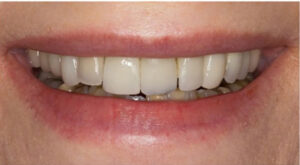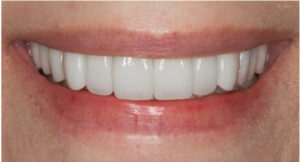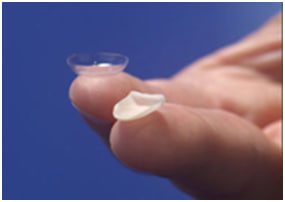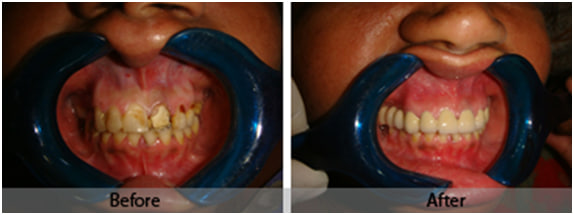



Tooth whitening is a procedure whereby certain bleaching agents are applied to the teeth in order to remove external and internal stains thus leaving the teeth several shades lighter. Various concentrations of hydrogen peroxide / carbamide peroxide are available for this use.
Your dentist will polish your teeth and check their current shade.
Office Teeth Bleach: After protecting your gums and lips, the dentist will apply the bleaching agent on the teeth to be lightened and leave it there for a specific period of time. Intermittently, your teeth may be exposed to a special light, which will accelerate the bleaching process. Alternatively, you may be given a tray containing the bleaching agent to wear while in the dental clinic.
Teeth Bleaching is basically of 2 types:
Office Teeth Bleach: This is done by your dentist at the dental clinic using a higher concentration of teeth bleaching material.
Home Teeth Bleach: This is done by yourself at home using teeth bleaching material and a special tray dispensed by your Dentist. Depending on your type of dental staining and your time restriction, the dentist will advise either one or a combination of both of them.
Office Teeth Bleach: Each sitting of teeth bleaching done at your dentist’s clinic can take between 30-60 minutes. The total number of sittings is usually 3-4, though this can vary depending on the severity of the staining. e.g. Tetracycline staining.
If your front teeth are stained, chipped, or malaligned, veneers will give you a good life-like appearance with minimum tooth adjustment. A veneer is a porcelain facing on the front of your teeth, just like a false finger nail, making them look good as new.

Veneers are made out of porcelain and are used mainly for aesthetic reasons. Veneers make teeth look natural and healthy, and because they are very thin and are held in place by a special strong bond (rather like super-glue) very little preparation of the tooth is needed.
Porcelain veneers can improve the colour, shape and position of teeth. A precise shade of porcelain can be chosen to give the right colour to improve a single discoloured or stained tooth or to lighten front teeth (usually the upper ones) generally.
Veneers can also be used to close small gaps, when orthodontics (braces) are not suitable. If one tooth is slightly out of position, a veneer can sometimes be fitted to bring it into line with the others.
The process of having a dental veneer made for your tooth involves a few short visits to your Dentist. The procedure is simple and relatively painless.

Ceramic veneers take between 1-2 weeks to be made. During that period, your teeth may be fitted with temporary veneers to prevent sensitivity.
Ceramic veneers are bonded to the teeth using special adhesives. Once fixed, these veneers are exceptionally strong. It takes only a day or two to get used to them.
Tooth shaping: Your dentist will reshape the tooth, to create space all around it for the dental crown.
Impressioning: A measurement of the prepared tooth and of the surrounding and opposing teeth is taken. Your measurements are then sent to a dental laboratory for processing of the dental crown.
Temporary Dental Crown: Meanwhile, a temporary dental crown may be placed. Take care of your temporary dental crown by avoiding sticky and hard foods and be sure to clean around it.
Cementation: Soon, your dentist replaces your temporary dental crown with a permanent one. The dental crown is adjusted, making sure you are comfortable with it. It is then cemented or bonded to the prepared tooth.
• Treat your crowned tooth like a normal tooth.
• Brush and floss thoroughly.
• In the unlikely event of your dental crown or dental veneer coming off, keep it safely and contact your dentist immediately. These can generally be refixed.
People from all walks of life can greatly benefit from the improved confidence a better smile can give. With proper care, Veneers and Crowns will enhance your dental health and beauty for a long time to come.